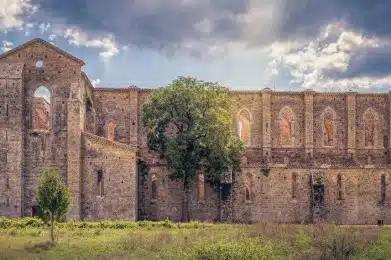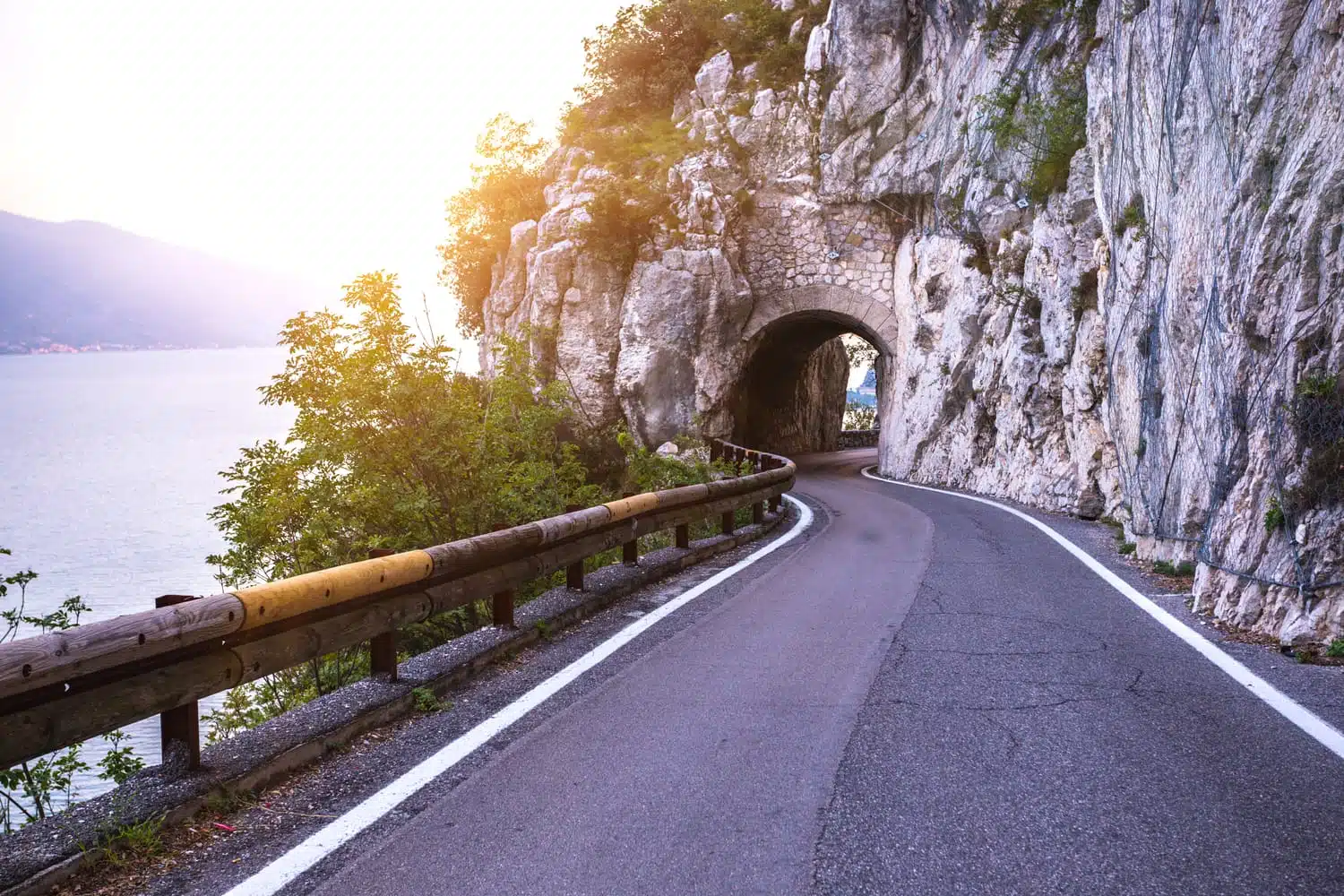The site is constituted by the hermitage (said “Rotonda of Montesiepi”) and from the great Abbey, now completely ruined and reduced to the sole walls, destination of tourist flow. The lack of the roof – which emphasizes the articulation of the architectural structure – combines in this abbey to those of Melrose, of Kelso and Jedburg in Scotland, Tintern in Wales, of Cashel in Ireland of Eldena in Germany, Beauport at Paimpol (Brittany) and the convent do Carmo in Lisbon. In Italy, a comparison, at least aesthetic, can be fulfilled with the so-called Unfinished Venosa (Power), which however does not fell into ruin: works of building were never completed. Another church said unfinished, built in the first half of the Twentieth Century, is located in Brendola, in the province of Vicenza.
San Galgano, owner of the place that is celebrated on 3 December, you know that he died in 1181 and that, convertitosi after a youth disordered, withdrew to the hermitic life in order to devote himself to penance, with the same intensity with which it was first given to the lewdness. The culminating moment of conversion, it came to pass in the day of Christmas 1180, when Galgano, arrived on the hill of Montesiepi, driven into the soil his sword, in order to transform the weapon in a cross; in fact in the Rotonda there is a rock from which peep slots a hilt and a segment of a sword corroded by years and rust, now protected by a plexiglas showcase. The clear echo of the myth arturiano has not failed to raise curiosity and of course some hypothesis daring on possible relationships between the mythology of the Round Table and the history of the Holy chiusdinese.
For the will of the bishop of Volterra Ugo Saladini in place of the death of San Galgano was built a chapel completed around 1185. The bishop he succeeded, Ildebrando Pannocchieschi, instead promoted the construction of a true and own monastery. In the last years of his life Galgano had come into contact with the Cistercians and were precisely them to be called upon to fondar the first community of monks who is already active in 1201; at that time the Church of Montesiepi appeared as a subsidiary of the Cosamari Abbey.
Toward the end of the nineteenth century the interest toward the monument shots. It began to assume the restoration, became a relief of the architectural structures and the whole building was at the center of a full-bodied historical study to which you accompanied a photographic campaign carried out by the Fratelli Alinari in Florence.
In 1924 began the restoration with conservativoad method the work of Gino Chierici, which it is inspired by the principles of John Ruskin father of conservative restoration. Were not, therefore, made arbitrary reconstructions or additions: it was decided simply to consolidate what remained of the monastery.



